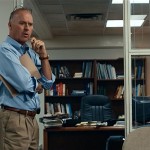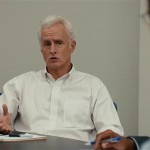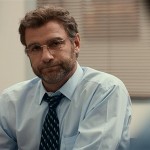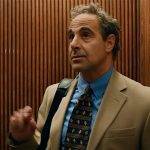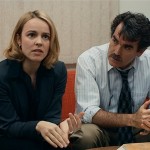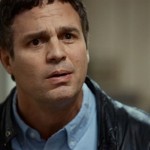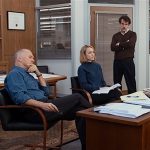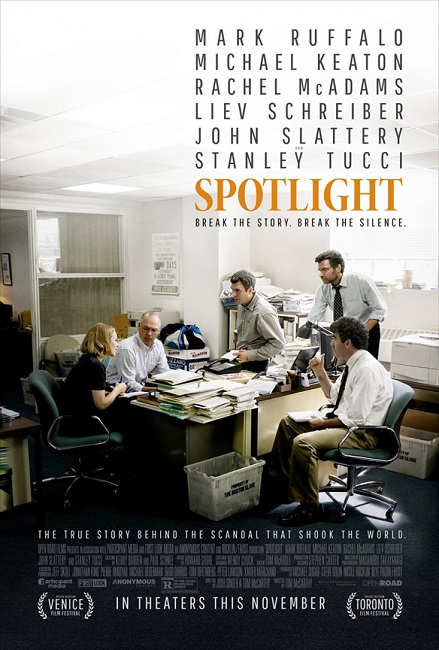
Spotlight – 2015
The new winner for 2015 is a movie called Spotlight, so named because the name of the newspaper specialty column for the Boston Globe was called Spotlight. The purpose of the column was to do in depth investigative reports on issues of social significance. This historical film tells the story of how the 4 Spotlight reporters and the newspaper editors of the Globe shined their spotlight on one of the world’s best kept dirty secrets: the rampant child abuse and sexual assaults perpetrated on children within the Catholic Church.
And it wasn’t just that the child abuse was uncovered, but that the Catholic Church had known about the problem for many, many years, and had not only done nothing to stop the problem, but had official policies in place to cover up the scandals and protect the priests who were preying on young boys and girls. Priests were never punished. They were just moved to different parishes where they would sexually abuse more defenseless children.
I actually didn’t really know much about the issue, and so I did a little reading to see just how accurate the events in the film were. Apparently they were incredibly accurate. In fact, they were so accurate and were handled with such honesty and care by the filmmakers, that the Catholic Church in the Archdiocese of Boston said that the “media’s investigative reporting on the abuse crisis instigated a call for the Church to take responsibility for its failings and to reform itself—to deal with what was shameful and hidden.”
Also, “a review published by the Catholic News Service called the film a ‘generally accurate chronicle’ of the Boston scandal, but objected to some of the portrayals and the film’s view of the Church. On the Catholic News Service, auxiliary bishop of Los Angeles, Robert Barron, said that it is ‘not a bad movie’, as it shows that the wider community shares the responsibility for sexual abuse committed by priests, but that the film is wrong to insinuate that the Church has not reformed.”
Interesting Note: One of the very few critics of the film said that one of the failings of the film was that it never made any mention of the psychologists who assured the Catholic Church that priests who had been caught molesting children had undergone sufficient therapy to be returned to their jobs.
It is important to mention those things before getting to other aspects of the film because the movie’s incredible accuracy and realism were what made it so impressive. The movie is nearly educational about the scandal. The script made sense, was finely crafted, and did nothing to sensationalize the negative aspects of the situation. They seemed to go out of their way to give the victims of the abuse, the Survivors as they were called, a real voice. And it was done with true sensitivity and care.
But at the same time, the film did not focus on attacking the Catholic Church. Instead, its focus was on the power of journalism. While I was watching it, I was very much reminded of the 1976 Best Picture nominee, All the President’s Men with Robert Redford and Dustin Hoffman. Both films were the stories of criminal conspiracies that were investigated and made public by journalists. In fact, one of the film’s goals was to highlight the power of journalism in an age where the profession has been waning.
Josh Singer, one of the two screenwriters, was quoted as saying that, “This story isn’t about exposing the Catholic Church. We were not on some mission to rattle people’s faith. In fact, Tom (Tom McCarthy, the other screenwriter and the film’s director) came from a Catholic family. The motive was to tell the story accurately while showing the power of the newsroom – something that’s largely disappeared today. This story is important. Journalism is important, and there is a deeper message in the story.”
The story took place in 2001. Many will remember the very public scandal that rocked the world back then, giving the Catholic Church and nearly all organized religion a black eye. The movie had an ensemble cast with some pretty prominent names. Michael Keaton played the Spotlight team’s editor, Walter “Robby” Robinson. He worked under Ben Bradlee Jr., played by John Slattery. The film starts off as the Globe’s chief editor is retiring, and a new editor, Marty Baron, played by Liev Schreiber, is hired. The three other Spotlight reporters working under Robinson are Michael Rezendes, played by Mark Ruffalo, Sasha Pfeiffer, played by Rachel McAdams, and Matt Carrol, played by Brian d’Arcy James.
And there is your main cast. The film gave pretty equal time to each of the actors, giving each of them their own little dramatic moments. The only exception to that might have been Ruffalo. His drama was, at times, more intense, and his story was followed a little more closely. Ruffalo was nominated for Best Supporting Actor for his work, and I really think he deserved it. I have seen him in other films and he has always been good. In Spotlight, he was phenomenal. He seemed deeply invested in his role and extremely passionate about the subject matter. I was really impressed with his performance.
However, there were also a number of other actors whose names are easily recognizable, all of whom did a fine job, as well. Stanley Tucci played Mitchell Garabedian, an attorney who was representing the victims of sexual abuse without much apparent success, Billy Crudup as Eric McLeish, another attorney who also represented victims, but who was compliant with the cover-ups perpetrated by the Church, and Len Cariou, playing the part of Cardinal Law, the high Church official who knew about the abuse going on in the Boston area and was largely behind the cover-up conspiracy.
Interesting note: I liked how the movie acknowledged the terrorist attacks of September 11 that took place during their investigations. In fact, part of the plot was that the story about the Catholic Church sexual abuse scandal was almost derailed because every reporter possible was reassigned to cover that more immediate story.
The wonderful thing about the plot was how easily it was able to draw me in to the story. It really is a very disturbing subject matter. It was made clear that yes, the Catholic Church and its backwards policies were the real criminals, but the blame did not stop there because it was a crime that everybody knew about, yet did nothing. It made the point of saying that if you know about such a terrible crime and do nothing, then you are far from blameless. In fact, the character of Robby had once had the opportunity to tackle the story years earlier, but had not. He was honest enough to put his own name on the list of those who were responsible for letting the sexual abuse crimes continue.
The number of victims was staggering. The Spotlight team is initially told to investigate a single priest who had been caught abusing children, and the cardinal who allegedly knew about it and did nothing. But as the investigators dig deeper and uncover more evidence and hear more stories, the number of priests being investigated raises to 13. Then, as they dig even deeper, the list of names raises to 87 clergymen in the Boston area alone.
The investigative team keeps pushing and keeps working, relentlessly pursuing the truth. They conduct interview after interview, they file a lawsuit to gain access to sealed documents that prove the Cardinal’s involvement in the cover-ups. The film does a really great job of following the investigative process. Not only did I learn about the scandal, but I learned a little bit about how such investigative reporters do their jobs.
Now, I have to take a moment to mention the film’s score. Right from the opening credits, the music set the tone of the entire movie. It had a distinctly sad and melancholy feel. It was heavy and a bit ominous. It seemed to have an immediate sense of foreboding that never completely went away. Then, during the scenes where the surviving victims began to tell their stories, the sadness and depression that they felt seemed to fit right into the music. They complimented each other and made for some pretty effective story-telling.
And the stories that they told made a terrible sense. Only a few full and detailed stories were told, but they were eerily realistic when describing how the abusive priests were able to manipulate the children into having sexual relations with them, and how they were able to callously prey on the children’s fragile emotions to prevent them from telling anybody about what was being done to them.
And why didn’t the victims generally say anything? Because a priest is supposed to be a kind and benevolent authority. If he says it is alright to do something, then it must be alright. Then, after the abuse has started, shame is a powerful emotion that prevents the child from saying anything.
Interesting note: The film did a wonderful job of looking at the scandal from a number of different viewpoints. It examined it from the prospective of the Church, the lawyers, the reporters, the public, the victims, and even, in one case, a perpetrator. In a small but memorable role, Richard O’Rourke, plays Father Paquin, a retired priest who not only freely admits to molesting children, he claims that he was the victim.
But the end of the film was like both a vindication and a victory for the victims. The Spotlight team finally gathers enough evidence to run their story that not only goes after Cardinal Law, but the Catholic Church and its policy of ignoring the sexual abuse being perpetrated by hundreds of its priests. As part of their article, they give the number of the Spotlight Office as a victim hot-line. The morning the story runs, they arrive at the office, expecting strong legal opposition from the Catholic Church. Instead, they are inundated with hundreds of calls from people all over the Boston area who want to come out of hiding and tell their stories, revealing that the abuse was even more widespread than they had even imagined. The time was right and the story had to be told. The Church was clearly guilty and had no defense.
After the screen went to black, but before the actual credits started rolling, the following text was shown on the screen: “Over the course of 2002, the Spotlight team published close to 600 stories about the scandal. 249 priests and brothers were publicly accused of sexual abuse within the Boston Archdiocese. The number of Survivors in Boston is estimated to be well over 1,000. In December of 2002, Cardinal Law resigned from the Boston Archdiocese. He was reassigned to the Basilica di Santa Maria Maggiore in Rome, one of the highest ranking Roman Catholic Churches in the world. Major abuse scandals have been uncovered in the following places…” The names of 206 cities around the world were then listed. I think screenwriter Josh Singer did his job. He showed just how powerful real journalism can be.
